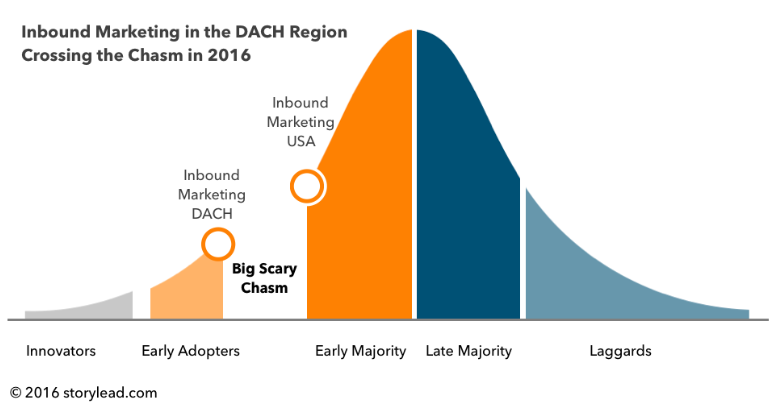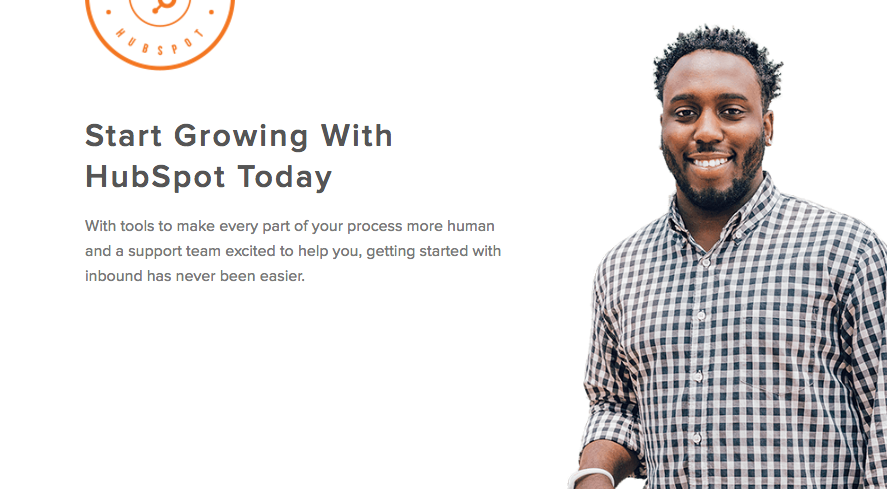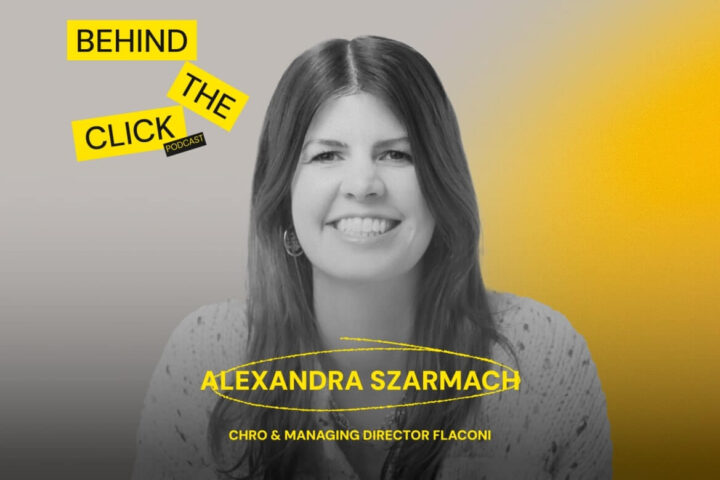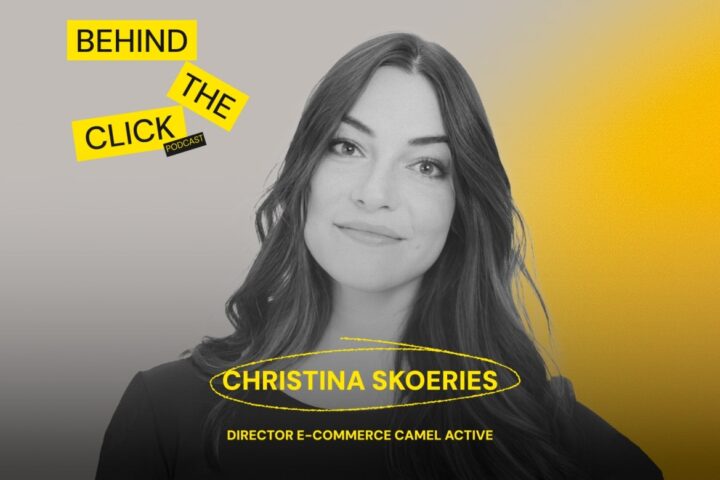Marketing must-do? Keep moving, keep exploring!
Written by
Editorial TeamPublished on

“Very good content that ranks high organically can attract visitors to your website for months and years after publishing”, says Karsten Köhler from HubSpot. In this interview, you will learn how marketing has changed, explore the advantages of inbound marketing over paid ads, and get a handful of advice on how to approach your marketing activities today – this all straight from the expert’s mouth. Plus, be sure to take a look at HubSpot’s 2016 report on inbound marketing that we have linked here for you. It will be a good read before Karsten Köhler’s talk at the E-commerce Berlin 2017.
Paulina, E-commerce Berlin: HubSpot is an inbound marketing and sales platform that helps companies attract visitors, convert leads, and close deals with customers. The company was founded 10 years ago – and at that time few people knew about the concept of inbound marketing. Why did HubSpot decide to focus so much on inbound marketing?
Karsten Köhler, HubSpot: We noticed that back in 2006 the consumer had changed. Customers started to ignore classical marketing tactics like direct mail, TV ads and cold calling. All these things were no longer effective. The way humans shop, learn and spend their time has dramatically changed over the last few years. We are now spending much more time on social networks, Google, blogs and other online sites instead of watching TV, reading mail or talking on the phone. This massive shift in the way modern people live and shop has made us focus on inbound marketing from the very first day. We believed that it was time for the marketers to adapt to the way buyer’s had changed and not the other way around.
As the EMEA Marketing Manager at HubSpot, you are responsible for managing inbound marketing campaigns, supporting DACH region sales team with leads and MQL, and building overall marketing funnel for the German, Austrian and Swiss markets that make up the DACH region. This sounds like a challenging role with lots of work. Could you tell us a bit more about what your everyday job entails?
That’s correct. My role is very diverse because I look after the full marketing funnel. Most of my days start with checking my e-mails, reading up on some industries news, logging into our social media accounts and checking the marketing dashboard. On a given day I could end up working on some articles for our blog or help the team to launch our next e-book campaign. All the work that I do has immediate impact on our sales team because marketing qualified leads will be sent to the sales reps so they can contact people who have shown interest in our product. Hence, we have regular catch ups with the sales team to check metrics and performance on both ends and align the messaging. Between planning sessions and meetings I like to focus on our content strategy and map out the topics and conversion paths for our funnel. A normal day usually ends with checking my to do list and getting ready for the next big project or meeting on the following day.
Let’s talk a bit more about the specificity of inbound marketing in the DACH region. What is, in your opinion, characteristic of it? How does it differ from inbound marketing in other parts of Europe?
From my personal experience, the German market is still very focused on traditional marketing tactics and has only started to adapt inbound marketing as a new strategy in the past three years. Online marketing, content marketing, conversion optimization, SEO, SaaS link building and other SaaS SEO techniques are topics that are widely discussed by marketing professionals, but combining these tactics to a comprehensive strategy is something the DACH market needs to understand. Moreover, there are a lot of small and medium-sized businesses in the region that still have to develop a marketing approach that attracts customers. Some of these businesses are sceptical about the return on investment of measures like content marketing. But in our annual marketing and sales report “State of Inbound” we have seen that companies that rely on inbound marketing are four times more likely to rate their making strategy as effective. Hence, SMBs should overcome their delay in exploring new marketing paths.

Is inbound marketing good for any ecommerce business? How small market players can benefit from inbound marketing solutions?
The nice thing about inbound marketing is that it works so well for many different industries and businesses. It doesn’t matter if you’re a B2B or B2C business. Inbound marketing is a great solution for every business that wants to grow and generate more leads for their products or services. Especially e-commerce businesses can leverage inbound marketing very effectively. As people search for specific products or services online, visibility in search engines is the key for e-commerce businesses. You can either rank highly via paid ads, or organically, with valuable and search engine optimized content. The difference between these two options can be compared to renting a house versus buying a house. If you rent a house, you have to constantly pay to get a return. The same goes with paid ads, which a lot of e-commerce businesses are still using to show up in search. Once your budget is spent, the results are gone immediately. The opposite happens when you invest in content property the same as you would by buying a house – you have made a long-term investment that won’t vanish. That is why very good content that ranks high organically can attract visitors to your website for months and years after publishing. This long-lasting organic traffic can outperform any paid campaign and simultaneously give you a better return on investment.
What, in your opinion, best characterizes inbound marketing in the ecommerce industry? Can you think of any case study of an inbound marketing campaign in ecommerce that you liked in particular? I mean something that others can learn from.
There are a lot of interesting cases for inbound marketing in e-commerce. We have some customers that have implemented inbound tactics very successfully. For instance, Zaggora, a producer for sporting clothes that sells its products via its own website, has seen incredible results. In only six month they have increased the organic traffic by 91 percent and achieved a conversion rate of 47 percent in social media. How did they do that? Although Zaggora already produced interesting content and interacted with leads via social media they had difficulties to convert these leads into customers because they used a lot of different tools that did not integrate very well. By implementing a comprehensive all-in-one marketing platform that integrates with their e-commerce CRM platform they were able to align all marketing and sales efforts and gained deep insights into the effectiveness of their actions. With this step they were suddenly able to measure the results and adjust the strategy. This shows that although you might be using content marketing or social media there is still room for improvement. Inbound marketing is the strategic approach that helps companies to tap this potential.

The topic of your presentation at the E-commerce Berlin Expo 2017: “The Thin Line Between Personalization And Being Creepy”. Sounds enigmatic! Can you disclose a bit more? What made you choose this specific topic and why you think it deserves all the time and research you’re putting into preparing this talk?
A lot of businesses are now exploring the option to personalise messaging, e-mails and user interactions on websites, but have not much knowledge about the data and setup behind all these personalisation tactics. In my presentation I would like to share some insights into how far personalisation can or should go. I will look at good and bad examples and share some personal insights into more experience in using personalised marketing messaging and conversion paths. I think the topic is something everybody is going to be passionate about because especially the e-commerce business offers so many great opportunities for personalisation. We just have to make sure we get it right! That’s what I am here for.
E-commerce Berlin Expo is promising to be an exceptional meeting place for, both, the big and the small e-commerce companies with different backgrounds and experiences from different markets. How do you feel before talking to such a diverse audience?
I am excited to present at the event and share some of my inbound marketing tips with the audience. I am really looking forward to meeting a lot of marketers and discussing some of the challenges in the market. I think it’s great to have such a diverse audience and it will be interesting to see what questions and topics will be explored most.
You have an extensive professional experience with working in content management roles. Based on all your experiences in diverse organizations, how has content marketing changed over time?
In university I started working in journalism which made me critical of public relations and marketing. Content marketing is the closest thing to journalism if you want to promote your brand. When I switched position from journalism to content marketing, I maintained this view. At that time, around 2013, I saw only few brands that kept their explicit marketing messages out of their content. It is poor content marketing if you keep talking exclusively about your brand. This is slowly getting better, but it’s still one of the biggest obstacles for companies on their way to more valuable content and effective marketing. If companies miss out on producing high quality content, they will get problems very soon, because there is a plethora of content sources. Some brands are already adapting their content production in order to stand out from the crowd. This is a good strategy and will eventually benefit, both, the company and the customers.

What, in your opinion, is “the next big thing” in marketing?
Today search is evolving beyond Google. Users are starting to look for specific information on Facebook, Amazon and many other sources. This means that SEO will change rapidly over the next few years. Marketers will no longer be able to generate traffic by having content on their own web properties. Instead of solving for search engines, marketers will need to solve for user experience. Which apps are your customers using, what sites do people use to search for your product, which app allows you to interact with your persona? All these questions will have to be answered by the modern marketer. This shift in behavior will automatically lead us to new marketing challenges, but also opportunities. I think that it is going to be very important to have a solid online strategy that includes more than just your own website. That is one big thing that I see happening in the next few years.
How to best identify new marketing channels? What advice would you give to companies which are future-oriented and want to explore new ways for marketing their products or services?
I think that the way people shop and buy continues to change. This means marketing has to constantly adapt to new behaviors. Today, pleased customers are your best marketers and a helpful website is your best salesperson. Tomorrow, a customer’s entire shopping experience could be managed by advanced technologies or bots. I believe, as a business, it is very important to constantly be able to shift your strategy and adapt to the transformation around you. Consumers will not stop to change and nor will marketing. 10 years ago, companies had to fight for space in a shelf and they are now fighting for millimeters on the internet. The shifting balance between supply and demand means that companies have to be more competitive and challenge themselves by making sure they are always one step ahead of their competitors. I think it’s very important to constantly evaluate the market you are in and to talk to customers and make sure you update your persona research regularly. Only by listening and researching new behaviors will you be able to discover unexploited ways for your marketing. I believe that change is key for success for any modern marketer these days. Keep moving, keep exploring!
And, finally, where do you take your ideas for content from? What is the source of your inspiration?
I’m not a big fan of the concept of creativity and inspiration. It implies that you’re waiting for the right moment, the right mindset, the perfect idea. I have a structured approach to content creation. It’s all about your buyer persona. With a little bit of empathy you get easily a ton of relevant topics. Most of these topics can be broken down into smaller pieces that focus on a certain time frame, a place, an industry or a specific person. This approach is flexible and allows for random ideas as well. In order to create content with expert knowledge on all of these smaller subjects you need to be ahead of the curve: Read tech blogs, discuss with experts, brainstorm with colleagues. That’s my advice for great and inspiring content.
 Karsten Köhler manages HubSpot’s marketing for Germany, Austria and Switzerland. In this role he’s building out the overall marketing funnel for these markets, leads inbound marketing campaigns and supports the sales team with marketing qualified leads. Before coming to HubSpot he had worked as an account manager at an online marketing agency in Berlin where he first got in touch with inbound marketing. Karsten looks back on an extensive experience with content, having freelanced as a print, online and radio journalist for five years.
Karsten Köhler manages HubSpot’s marketing for Germany, Austria and Switzerland. In this role he’s building out the overall marketing funnel for these markets, leads inbound marketing campaigns and supports the sales team with marketing qualified leads. Before coming to HubSpot he had worked as an account manager at an online marketing agency in Berlin where he first got in touch with inbound marketing. Karsten looks back on an extensive experience with content, having freelanced as a print, online and radio journalist for five years.


